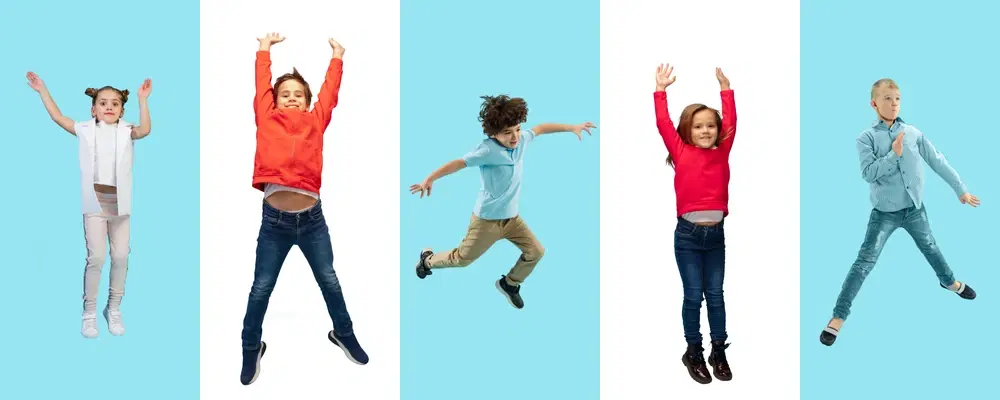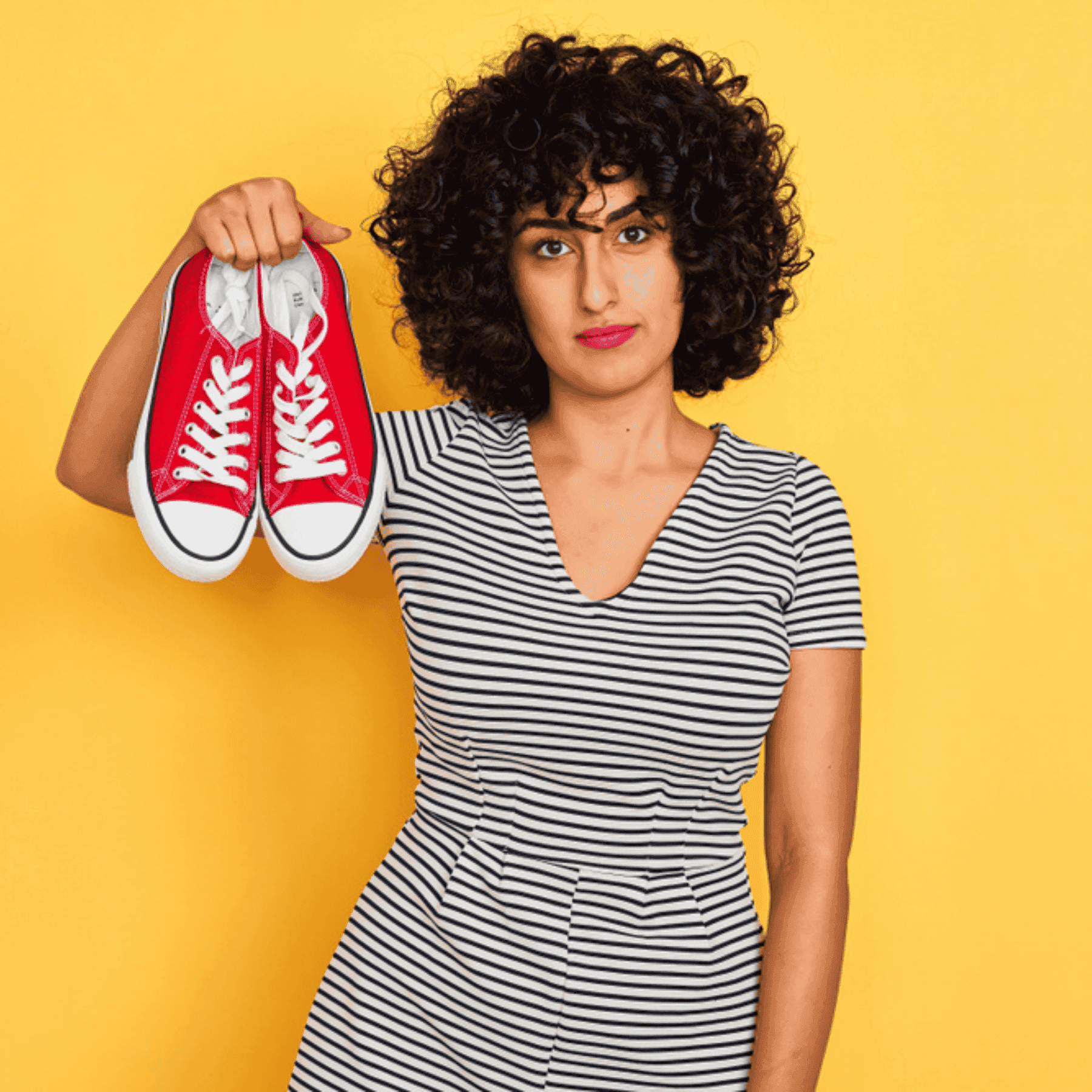
Footwear Guide
•05 min read

Choosing the right footwear for your child is more than just a style decision—it’s about comfort, support, and practicality. Parents often face the dilemma of deciding between kids shoes and sneakers. In this guide, you will learn the differences between these two popular types of children's footwear, helping you choose from the best shoes for kids that meet your child’s specific needs in durability, comfort, sizing, and care.
Kids shoes encompass a wide range of footwear designed for formal, casual, and everyday use. These shoes often feature structured designs and are crafted using materials like leather or synthetic fabrics for added support. They are the best shoes for kids when a more polished look is needed, such as for school or special occasions. Kids shoes are not only stylish as self-expression but are also built for durability and longevity.
Structured designs for formal occasions
Often made with durable materials like leather
Available in various styles, including loafers, Mary Janes, and boots
Sneakers, on the other hand, are known for their versatility and active functionality. Designed specifically for movement and play, they feature lightweight, breathable materials with flexible soles. This makes them a solid choice among supportive footwear for children, especially when your kid is running around or engaging in outdoor activities. Sneakers combine style with practicality, making them the comfortable shoes for kids in dynamic situations.
Lightweight and breathable for active lifestyles
Flexible soles that allow natural movement
Often include cushioned insoles for enhanced comfort
Kids shoes provide structured cushioning and are built with padded interiors to support long hours of wear. While they offer solid arch support, they sometimes lack the flexibility needed for very active play. They are best suited as children's footwear in settings where a neat and polished appearance is essential, such as school.
Structured support for growing feet
Comfortable for formal or school settings
Designed with built-in arch support
Sneakers excel in providing all-day comfort. Their lightweight design and cushioned soles allow for endless movement, making them ideal for sports and outdoor play. They are often considered among the most comfortable shoes for kids, as they are designed to adapt to energetic movements while keeping the feet cool and safe.
Enhanced cushioning for active movement
Breathable materials to prevent overheating
Flexible soles for natural foot movement
Pro Tip: Prioritize Comfort Over Style
When choosing footwear for your child, always put comfort and support first. Growing feet need the cushioning and flexibility that encourage healthy development, making these features more important than merely following trends.
Kids shoes are designed with upper layers of durable materials such as leather or robust synthetic fabrics. This makes them ideal for environments where durability is vital, like school or formal events. Their sturdy build ensures that these shoes can maintain their shape and integrity even when worn consistently.

Constructed from long-lasting materials like leather
Resistant to wear and tear in structured environments
Optimized for school and formal use
While sneakers are made from flexible, lightweight fabrics that support movement, they may require more regular replacement when used heavily. Their durability is optimum for sports and outdoor activities, thanks to reinforced soles. This durability makes them a great option when comfort and flexibility are prioritized above longevity.
Durable enough for sports and outdoor fun
Reinforced soles extend their lifespan during active use
May need replacement more frequently under heavy use
Proper sizing is crucial when choosing kids shoes to ensure both comfort and safety. A kids shoe sizing guide often comes with charts, which can make it easier to identify the perfect size. Regular measurement of your child’s feet and being attentive to the fit around the heel and arch will help avoid foot problems.
Regularly measure your child’s feet
Allow a little extra room for growth without compromising the snug fit
Ensure stability around the heel and arch area
Sneakers tend to be more adaptable when it comes to size thanks to their flexible design. Features like adjustable laces or Velcro straps ensure that the sneakers mold comfortably around your child’s feet. Their forgiving nature makes them a perfect choice for those looking for supportive footwear for children that grows with them.
Opt for sneakers with adjustable laces or straps
Ensure there is enough wiggle room for toes
Check for flexibility that allows natural movement
Maintaining kids shoes is essential to ensure they last longer. Regular cleaning, polishing, and proper storage go a long way in preserving their look and durability. When cared for well, these shoes remain supportive and fresh, providing the quality needed for formal and everyday wear.
Clean and polish leather surfaces regularly
Store in a dry environment to prevent damage
Use shoe trees to help maintain their shape
Sneakers demand a care routine that focuses on gentle cleaning and preserving their breathable fabrics. Avoiding harsh cleaning methods like machine washing can help maintain the integrity of the materials. Simple care techniques such as using mild soap, water, and deodorizing sprays will keep your kid's sneakers looking and feeling great.
Clean lightly with mild soap and water
Avoid machine washing to protect the fabric
Utilize deodorizing sprays to keep them fresh

For formal occasions and school settings, kids shoes with structured designs are usually the preferred choice. Their enduring quality coupled with durable materials makes them excellent candidates for environments that demand a neat look and long-lasting function. These best shoes for kids provide the necessary support for growing feet, while also enhancing a formal wardrobe.
Leather school shoes for uniform-required settings
Dress shoes fit for special events
For active play, sneakers are often the smart choice. Their lightweight construction and flexibility allow kids to move freely and comfortably. Recommended as comfortable shoes for kids, sneakers work exceptionally well for outdoor activities, sports, and everyday casual wear. Footwear recommendations for kids include selecting pairs that support both style and robust daily performance.
Breathable sneakers ideal for outdoor play
Cushioned sneakers designed for sports and rigorous activity
Measure your child’s feet using a ruler or a dedicated foot measuring tool. Compare the dimensions with the provided kids shoe sizing guide to achieve a proper fit.
Sneakers may be acceptable in schools with relaxed uniform policies. However, traditional school settings may require more formal kids shoes.
Leather and high-quality synthetic fabrics are known for their durability in kids shoes, as they resist wear and tear effectively.
Consider replacing sneakers when you notice signs like thinning soles or damaged uppers. Often, this may be every 6-12 months depending on how active your child is.
While kids shoes provide excellent structured support, they usually do not match the cushioning and flexibility of sneakers, which can affect comfort during active play.
Both kids shoes and sneakers offer unique benefits tailored to different needs. Kids shoes shine in formal settings with their structured design and durability, while sneakers lead in comfort and flexibility for active play. By paying close attention to factors like comfort, sizing, and care, you can select footwear that keeps your child's feet well-supported and stylish. This comparison helps you understand how to choose kids shoes and make informed footwear recommendations for kids that suit every occasion.